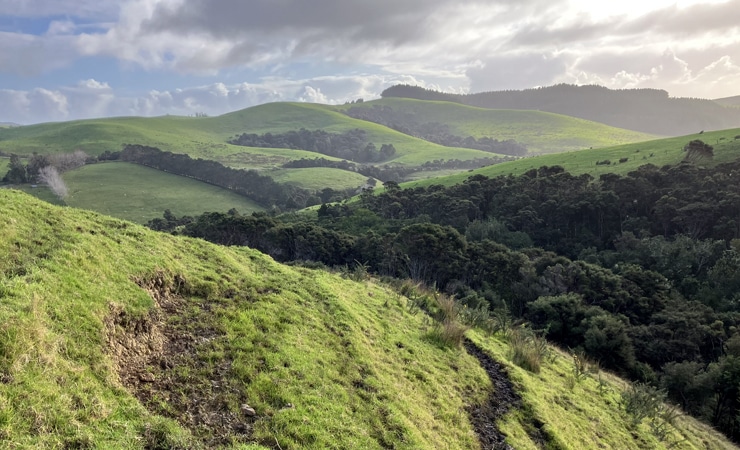Written by Myles Goodwin | Rural Subdivision Expert, Environmental and Planning Director | Cato Bolam Consultants
This article is more ecologically based than others we have done and focuses on how to maximise the environmental benefits that can be created from incentivised rural subdivision. The Unitary Plan subdivision rules for the rural areas concentrate on new titles from Environmental Protection, as we have discussed in our previous articles. The newly released National Policy Statement for Indigenous Biodiversity (NPSIB) has statements requiring that Councils “must promote” the increase of indigenous vegetation cover in their regions. Therefore, Councils actively encouraging substantial environmental protection that makes a real difference seems to be the way of the future.
The current Unitary Plan rules create a lot of positive environmental benefits when a significant number of landowners utilise them to restore and protect degraded areas over a wide area. However, we believe that even larger environmental benefits can be achieved through landscape scale restoration projects, and having a Unitary Plan that provides guidance on where more incentive for restoration is appropriate, while still allowing for more widespread restoration works. The aim would be to achieve complete protection along significant rivers as well as unbroken east/west and north/south ecological linkages across the region to allow for the ready movement of wildlife, and the dispersal of plant species along these corridors. Providing the opportunity for plants and animals to move long distances, especially north/south, becomes more important in a world affected by climate change. Creating resilience to climate change is another stated goal of the NPSIB.

At present there is no specific aim in the Unitary Plan to create corridors or protected river systems with large protected edge areas, which is something that we think should be included in the next Unitary Plan. While expanding existing areas of bush / wetland is a worthwhile goal, it is the next step of linking separate bush areas back together, and then linking multiple other ecological areas in that creates higher quality gains. Having identified corridors that are a priority for restoration and creating the opportunity for restoration projects on neighbouring land to join to each other would deliver collective gains that are greater than the sum of the individual parts. Already the start of such corridors are in place, for example along a significant length east of State Highway 16 and from State Highway 16 to the east coast, up south Kaipara Head, from Ardmore, through Clevedon and then to Maraetai, from Red Hill to Hunua, across parts of the Awhitu Peninsula and from Paremoremo through to Stillwater. To provide additional resilience these beginner corridors need reinforcing, widening, gaps closed and alternative linkages strengthened so there is more than one connection.

Overall, there is great potential to leverage the value of new titles (in-situ or transferable) in the Auckland Region to create the ability for the Council to promote the creation of continuous ecological corridors across the region. While some of these gains will come in association with more dwellings in the rural landscape, it will also mean that more people will have the opportunity to live within and enjoy the rural areas. With the National Policy Statement for Highly Productive Land meaning that new titles cannot go on the better-quality soils, these new dwelling are not associated with any significant reduction in rural production. The end result, while it may include more dwellings, means streams will run clean, steep slopes will be stabilised, wetlands will be restored, flooding will be reduced, wildlife habitat will be increased and a much greater resilience to climate change will be in place for our natural areas. To us, that is a worthwhile trade off.
Myles Goodwin, Joshua Wium and the Cato Bolam team provide start to end subdivision services.
Please contact Myles for an obligation free discussion via [email protected] or [email protected]
Or get in touch with our team using the contact button below.

